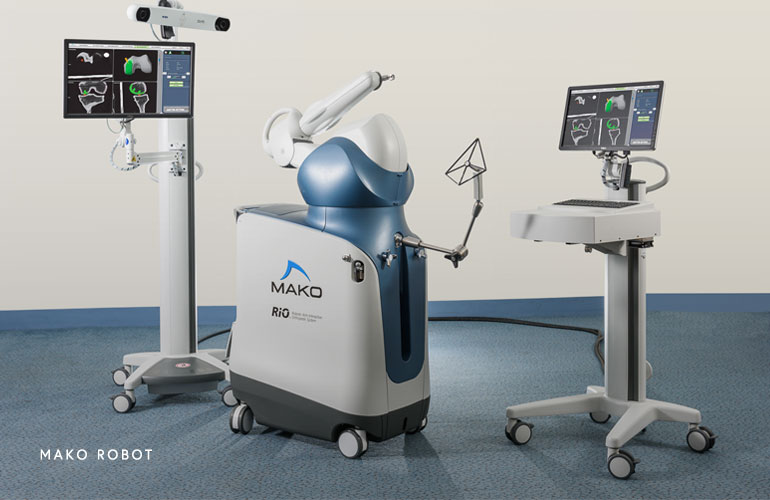Mako robotic-assisted surgery patient resources
Innovations in technology have been furthering the quality of health care since the beginning of modern science. Makoplasty, or robotic-arm assisted surgery is one such innovation. Dr. John Daniels is pleased to offer his patients robotic-assisted surgery for the following procedures:
- Partial knee replacement
- Total knee replacement
- Total hip replacement
What is Mako robotic-assisted joint replacement?
First, it’s important to understand, that when you hear ‘robotic-arm assisted technology,’ that the Mako robotic-arm doesn’t actually perform the surgery. The robotic-arm does not perform surgery, make decisions on its own, or move without the surgeon guiding the robotic-arm. Rather, surgery is performed by your Ortho Illinois board-certified, fellowship-trained orthopedic surgeon, who uses the Mako System to pre-plan and guide your surgery.

The Mako technology allows surgeons to selectively target the part of your joint damaged by arthritis, and when possible, replace the diseased area while sparing the surrounding healthy bone and ligaments. The technology helps improve the precision and accuracy of joint replacement surgery.
Each patient is unique, and can experience joint pain for different reasons. Pain from arthritis and joint degeneration can be constant or come and go, occur with movement or after a period of rest, or be located in one spot or many parts of the body. It is common for patients to try medication and other conservative treatments to treat their pain. If you haven’t experienced adequate relief with those treatment options, you may be a candidate for Mako robotic-assisted joint replacement.
How Mako robotic-assisted technology works
Learn how Mako robotic-assisted technology works by selecting the procedure below:
Mako Total Knee Replacement Animation Video
Mako Total Knee Replacement Video
Mako Total Knee Replacement Testimony Video

